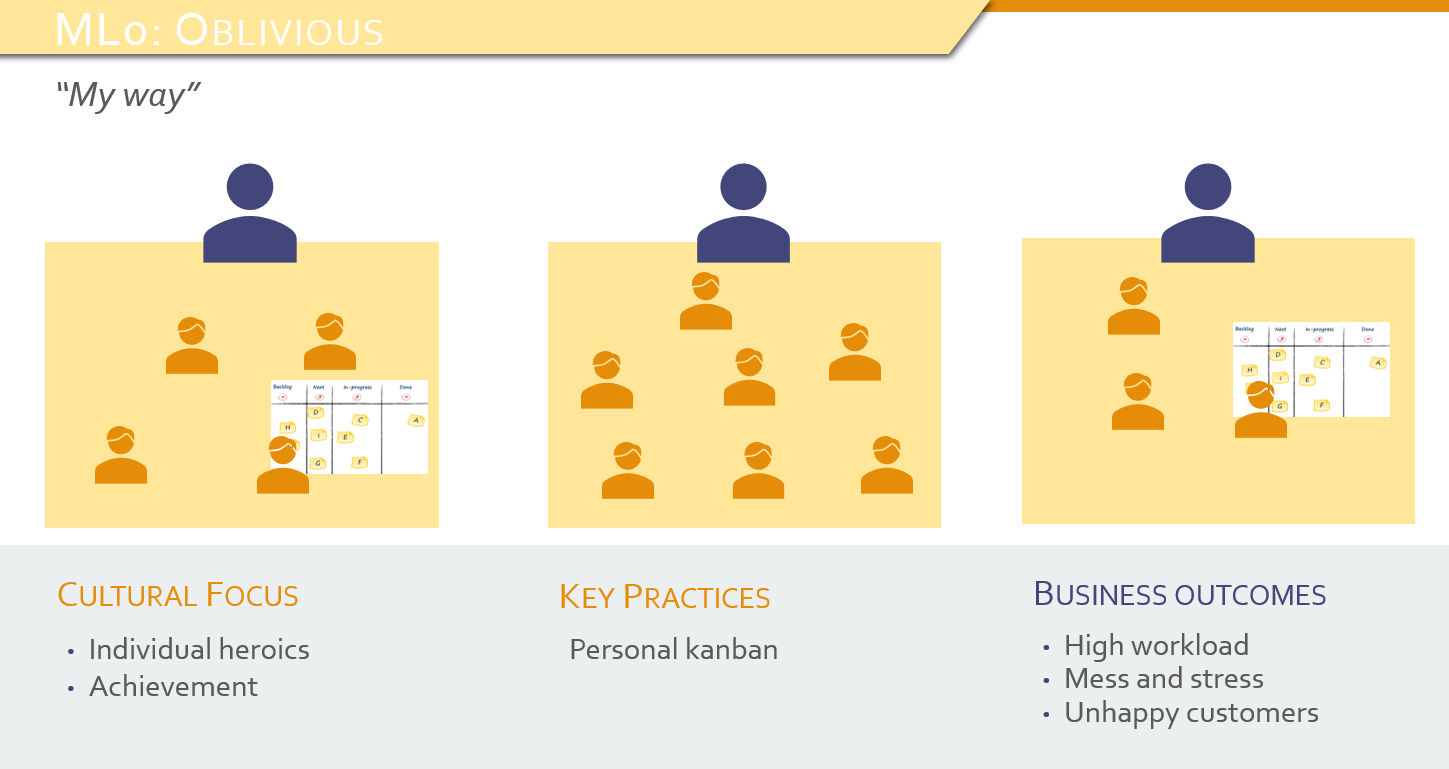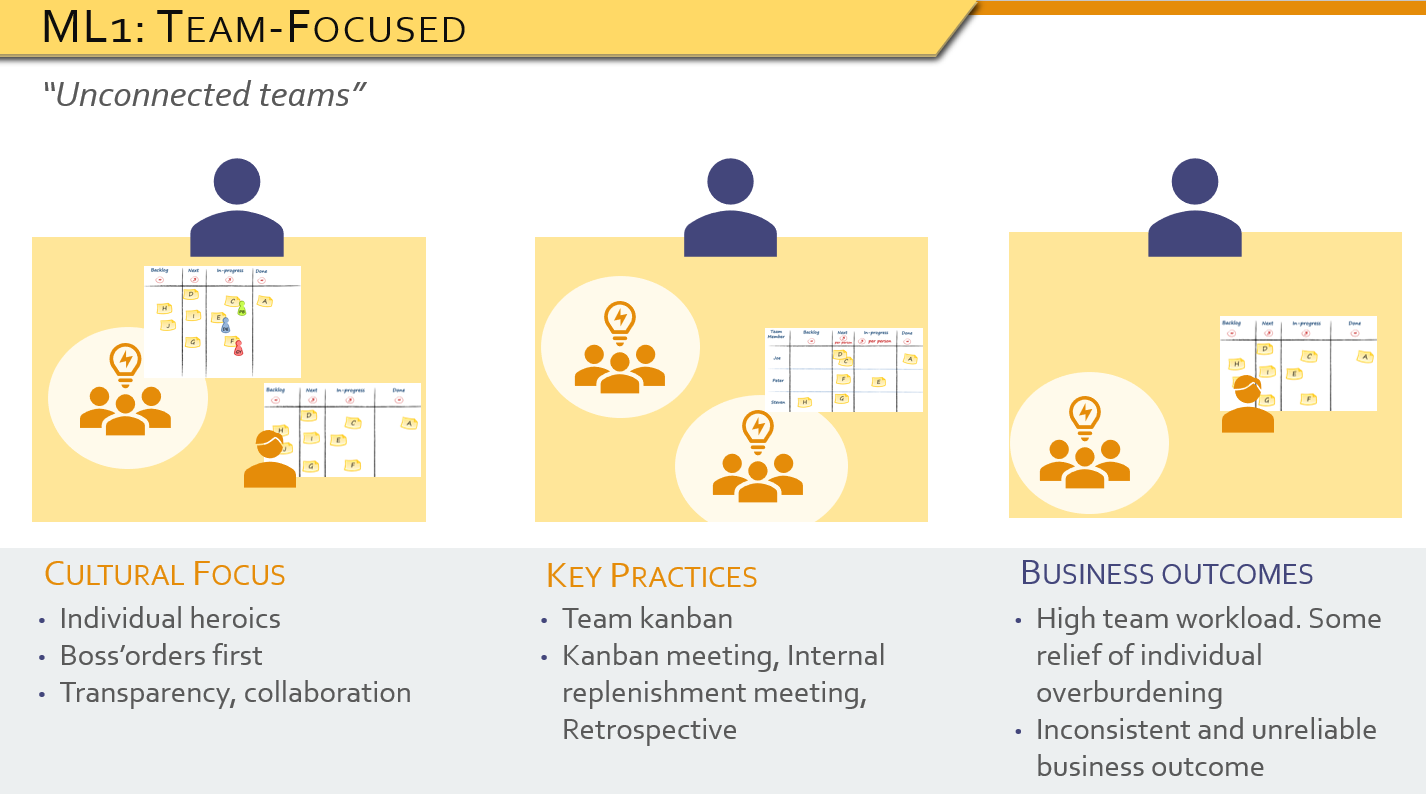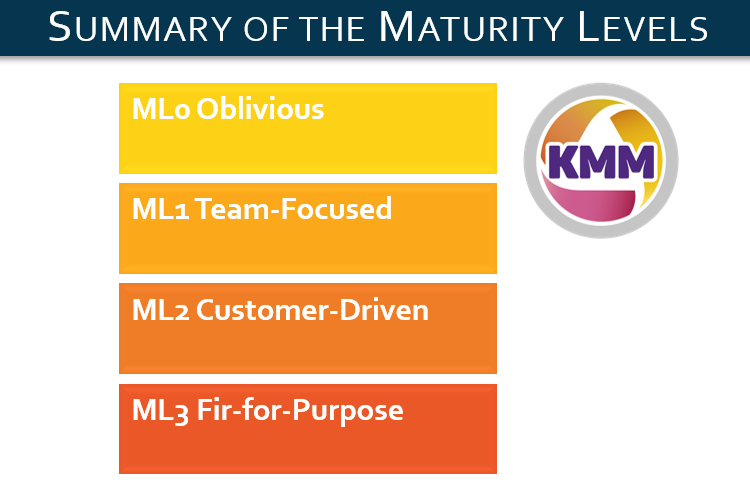I am sure you have heard of the Kanban Maturity Model, also known as KMM, but if you do not already know it, do not worry. We will prepare a series of related posts where we will explain one at a time each of the maturity levels by which companies scale to become an organization “Fit-for-purpose”.
The KMM has created thanks to the experience of more than 10 years of its creators, Teodora Bozheva and David J. Anderson working in different organizations in various sectors and countries. It brings together the most relevant practices by which organizations can be guided to achieve improvements, meet customer expectations, avoid and solve challenges such as resistance to change, set too ambitious goals or not know how to continue advancing on their path to agility.
It consists of 7 levels of maturity in total, the first of which is level 0 known as “oblivious” in which the people of the organization are focused solely on their personal tasks, there is no team vision. It is also appreciated at this level that there are always people with very specific knowledge who do not usually share with others what they know since they are focused on their work coming out. They don’t know they have to understand the process. But we are not going to focus on explaining this level 0 since we are interested in moving beyond this level.

We move to level 1 from where in most organizations begins, known as “team focused”. According to the KPMG’s latest annual report “Agile Transformation From Agile experiments to operating model transformation” 2019, we can highlight that 74% of respondents apply Agile in their organization at the team level; seeing very far to apply it at the organization-wide level.
At level 1 we are already talking about team tasks, although it is true that there is still no culture of full collaboration. A team kanban board is already used at this level where each person’s tasks are visualized so that it exists and the principle of transparency and that it facilitates collaboration. At this level, there is almost always someone who “pulls the cart” such as a Team Leader or responsible.
As a general rule, the main objective of this level will be to create a common understanding that it is not to start work, since if we start without finishing the system collapses, that is why we start using avatars that point out the work of each person, you can use WIP limits (Work In Progress) both per person and per team, start visualizing initial policies so that all team members know how to act on any unforeseen or change of priorities, and some metrics are being used that, for the moment, will only measure people and their jobs (workflow management metrics, locks, when a job starts, when it ends …).
As for the meetings that are usually held at this level is the Kanban Meeting, daily, informal and “stand up meeting” in which to talk about the problems that exist to continue with something that same morning, or some change of priority by the entry of an emergency; and on the other hand the Team-level Replenishment Meeting where you talk about tasks that can enter the board once a week and which have problems; it’s about reviewing and re-feeding the board so that the team has the job well defined.
At this level, it also usually happens that you start thinking about customer expectations, something interesting. For last, it is essential that Middle/Senior Level Management is involved to continue the path to agility and thus continue with best practices to move to level 2 known as “customer-driven”.

Do you want to continue to know the maturity levels?
In another post, we will explain the next level 2 of maturity “customer-driven”. Follow us on social networks so you do not miss the new posts.
Isabel Villanueva Izquierdo
Accredited Kanban Coach
www.berriprocess.com



